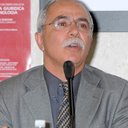Induction of two different modes of cell death, apoptosis and necrosis, in rat liver after a single dose of thioacetamide.
Keywords
Abstract
A sequential study of the appearance of liver cell death after thioacetamide (TH) administration was performed in male Wistar rats. Within 3 hours of a single dose of TH, occurrence of cell death by apoptosis was evident around the centrilobular area. Light as well as electron microscopic examination demonstrated the presence of eosinophilic globules, often containing nuclear remnants (apoptotic bodies); they frequently were found within the cytoplasm of intact hepatocytes. The number of apoptotic bodies (ABs) was further enhanced at 6 hours, resulting in a 70-fold increase over the control values. Although necrosis or inflammation could not be observed at this time, as monitored by microscopic analysis as well as by determination of serum glutamate pyruvate transaminase levels, centrilobular necrosis accompanied by massive inflammatory reaction was evident at 12 hours and even more pronounced at 24 to 36 hours. Evidence of liver regeneration was found to occur at 48 hours, and the liver regained its normal architecture between 72 and 96 hours. Studies performed to analyze the activity of 'tissue' transglutaminase (tTG), a presumptive marker of apoptosis, showed that, 1 hour after treatment, TH caused a drastic dose-dependent inhibition of the enzyme activity. This early inhibition was followed by a rapid recovery in tTG activity that paralleled the induction of apoptosis in the liver. Treatment with cycloheximide (CH) 2 hours after TH partially inhibited the incidence of ABs at 6 hours (approximately 30% inhibition). The present study indicates that two different modes of cell death, apoptosis and necrosis, may be induced in a sequential fashion by a single dose of TH.


